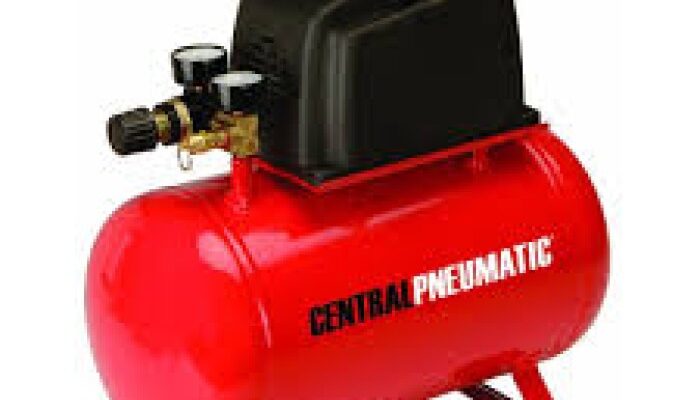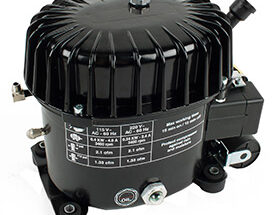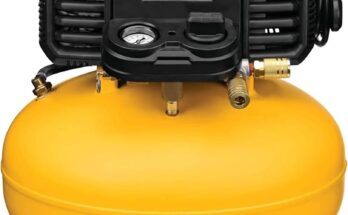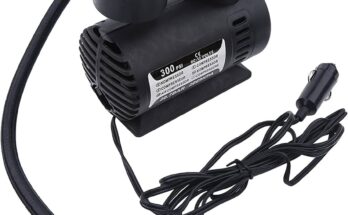Introduction
Despite common belief, central pneumatic air compressors aren’t just for industrial use. These versatile machines find their way into many DIY enthusiasts’ garages and workshops, offering a convenient and efficient source of compressed air for various tasks. If you’ve ever struggled with inflating tires, powering pneumatic tools, or even painting, a central pneumatic air compressor might just be the solution you need. In this blog post, we’ll delve into the world of central pneumatic air compressors, uncovering seven essential tips to help you maximize their efficiency and get the most out of your investment.
Understanding Central Pneumatic Air Compressors
Central pneumatic air compressors are essential tools that generate compressed air for powering various pneumatic tools and equipment. These machines work by drawing in air, compressing it to a higher pressure, and storing it in a tank until it’s needed. Unlike portable air compressors, which are often smaller and more lightweight, central pneumatic air compressors are typically larger and stationary, making them suitable for more heavy-duty applications.
When choosing a central pneumatic air compressor for your home garage, it’s essential to consider several factors to ensure you get the right one for your needs. Firstly, assess the power and capacity of the compressor. Look for a model that provides enough horsepower and air pressure (measured in PSI) to handle the tasks you’ll be performing. Additionally, consider the tank size, as a larger tank will allow for longer operating times between refills.
Another crucial factor to consider is the noise level of the compressor. While central pneumatic air compressors tend to be quieter than their portable counterparts, some models can still produce significant noise during operation. If you’ll be working in a shared space or noise-sensitive environment, look for a compressor with noise-reducing features or consider installing soundproofing measures in your garage.
Furthermore, pay attention to the compressor’s maintenance requirements. Regular maintenance is essential for keeping your central pneumatic air compressor running smoothly and efficiently. This includes tasks such as checking and replacing air filters, lubricating moving parts, and inspecting hoses and fittings for leaks or damage. Neglecting maintenance can lead to decreased performance, increased energy consumption, and even premature failure of the compressor.
Choosing the Right Central Pneumatic Air Compressor
When it comes to selecting the right central pneumatic air compressor for your needs, it’s essential to consider several key factors. Many people believe that all air compressors are the same, but in reality, there are significant differences between models that can affect their performance and suitability for various tasks.
One of the first things to consider is the power and capacity of the compressor. While it may be tempting to opt for the most powerful model available, it’s essential to match the compressor’s power to the tasks you’ll be performing. For example, if you only need the compressor for occasional inflation tasks, a smaller and less powerful model may be sufficient. However, if you’ll be using pneumatic tools or painting equipment, you’ll likely need a more robust compressor with higher horsepower and air pressure capabilities.
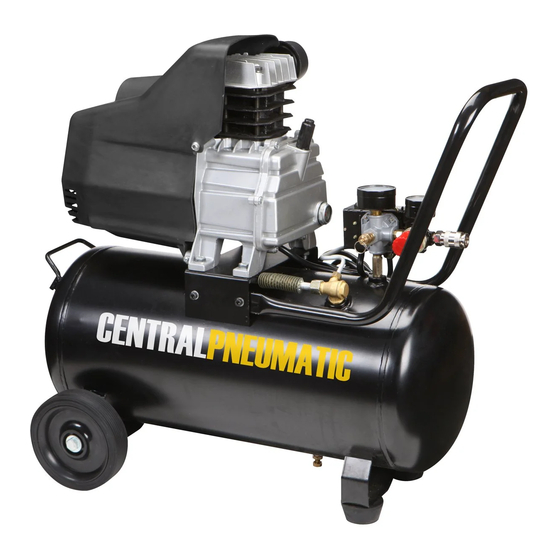
Photo By: manualslib.com
Additionally, pay attention to the size of the compressor’s tank. A larger tank can provide more consistent airflow and allow for longer periods of continuous operation before the compressor needs to cycle on again. This can be particularly important for tasks that require sustained air pressure, such as painting or sandblasting.
When comparing different central pneumatic air compressor models, it’s also essential to consider the noise level produced during operation. While all air compressors generate some level of noise, some models are quieter than others. If you’ll be working in a shared space or noise-sensitive environment, look for a compressor with noise-reducing features or consider investing in soundproofing measures for your workspace.
Another factor to consider is the compressor’s portability. While central pneumatic air compressors are typically larger and more stationary than portable models, some models come with built-in wheels or handles for easier transport. If you anticipate needing to move the compressor frequently, look for a model with convenient mobility features.
Lastly, don’t forget to consider the brand reputation and warranty coverage when choosing a central pneumatic air compressor. Opting for a reputable brand with a history of reliability and good customer service can provide peace of mind and ensure that you’re investing in a quality product. Additionally, check the warranty coverage to understand what is included and for how long, as this can vary between manufacturers.
Maintenance and Upkeep
Many people believe that once they’ve purchased a central pneumatic air compressor, their work is done. However, regular maintenance is essential to ensure that your compressor continues to perform optimally and has a long lifespan. Neglecting maintenance can lead to decreased performance, increased energy consumption, and even premature failure of the compressor.
One of the most critical aspects of compressor maintenance is keeping it clean and free of debris. Dust, dirt, and other contaminants can accumulate in the compressor’s intake filters and reduce airflow, leading to decreased efficiency. Regularly inspect and clean the intake filters to ensure that air can flow freely into the compressor.
Additionally, it’s essential to check and replace the compressor’s oil regularly. Like the engine in a car, the compressor’s pump requires lubrication to operate smoothly and prevent overheating. Refer to the manufacturer’s guidelines for recommended oil change intervals and be sure to use the correct type of oil for your compressor.
Another important maintenance task is inspecting the compressor’s hoses and fittings for leaks or damage. Over time, hoses can become worn or develop cracks, which can result in air leaks and decreased performance. Replace any damaged hoses or fittings promptly to prevent air loss and maintain optimal efficiency.
It’s also crucial to check the compressor’s pressure switch and safety relief valve regularly. These components are essential for regulating air pressure and preventing the compressor from over-pressurizing, which can lead to damage or injury. Test the pressure switch and safety relief valve according to the manufacturer’s instructions and replace them if they are not functioning correctly.
In addition to these regular maintenance tasks, it’s a good idea to keep a maintenance log to track when various maintenance tasks were performed. This can help ensure that no tasks are overlooked and provide a record of the compressor’s maintenance history, which can be valuable for troubleshooting and warranty purposes.
By following these essential maintenance tips and staying proactive about caring for your central pneumatic air compressor, you can ensure that it continues to perform reliably and efficiently for years to come. In the next section, we’ll explore some accessories and upgrades that can help enhance your compressor’s performance even further.
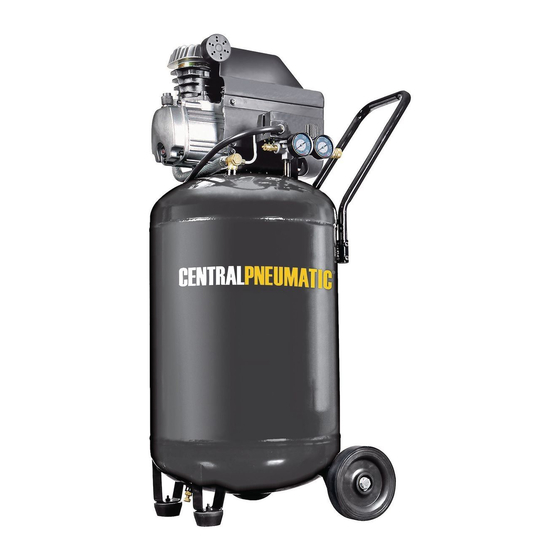
Photo By: manualslib.com
Pros and Cons
Central pneumatic air compressors offer several advantages, including their versatility, efficiency, and ease of use. They are suitable for a wide range of applications, from inflating tires to powering pneumatic tools and equipment. Additionally, central pneumatic air compressors tend to be more affordable than other types of compressors, making them accessible to DIY enthusiasts and hobbyists.
However, central pneumatic air compressors also have some drawbacks to consider. They may not be as powerful as other types of compressors, limiting their suitability for certain heavy-duty tasks. Additionally, some models can be noisy during operation, which may be a concern if you’re working in a shared space or noise-sensitive environment.
Final Verdict
In conclusion, regular maintenance is essential for keeping your central pneumatic air compressor running smoothly and efficiently. By following the maintenance tips outlined in this section, you can prolong the life of your compressor and ensure that it continues to perform reliably for years to come. While central pneumatic air compressors offer many benefits, it’s essential to weigh the pros and cons carefully to determine if they’re the right choice for your needs. With proper maintenance and care, a central pneumatic air compressor can be a valuable addition to your workshop or garage.
Frequently Asked Questions (FAQs)
Q: How often should I perform maintenance on my central pneumatic air compressor? A: It’s recommended to perform maintenance on your central pneumatic air compressor regularly, ideally every few months or according to the manufacturer’s guidelines. Regular maintenance helps ensure optimal performance and prevents issues from arising.
Q: Can I use any type of oil for my central pneumatic air compressor? A: No, it’s essential to use the correct type of oil recommended by the manufacturer for your central pneumatic air compressor. Using the wrong oil can lead to decreased performance and potentially damage the compressor.
Q: Are central pneumatic air compressors suitable for professional use? A: While central pneumatic air compressors are versatile and can handle many tasks, they may not be powerful enough for certain heavy-duty professional applications. It’s essential to assess your specific needs and consider the compressor’s capabilities before making a decision.
Q: How can I reduce the noise level of my central pneumatic air compressor? A: There are several ways to reduce the noise level of your central pneumatic air compressor, including investing in a model with noise-reducing features, installing soundproofing materials in your workspace, or using ear protection while operating the compressor.
Q: What should I do if my central pneumatic air compressor develops a leak? A: If you notice a leak in your central pneumatic air compressor’s hoses or fittings, it’s essential to address it promptly. Replace any damaged components and ensure that all connections are tight to prevent further air loss and maintain optimal performance.
Q: Can I use my central pneumatic air compressor for painting? A: Yes, central pneumatic air compressors can be used for painting, but it’s essential to choose a model with sufficient horsepower and air pressure capabilities for the task. Additionally, you’ll need to use the appropriate spray gun and accessories for your painting project.
Q: How long do central pneumatic air compressors typically last? A: The lifespan of a central pneumatic air compressor can vary depending on factors such as usage, maintenance, and build quality. With proper care and regular maintenance, a central pneumatic air compressor can last for many years.
Q: Can I transport my central pneumatic air compressor to different locations? A: Some central pneumatic air compressors come with built-in wheels or handles for easier transport, making them more portable than others. If portability is essential to you, consider investing in a model with mobility features.
